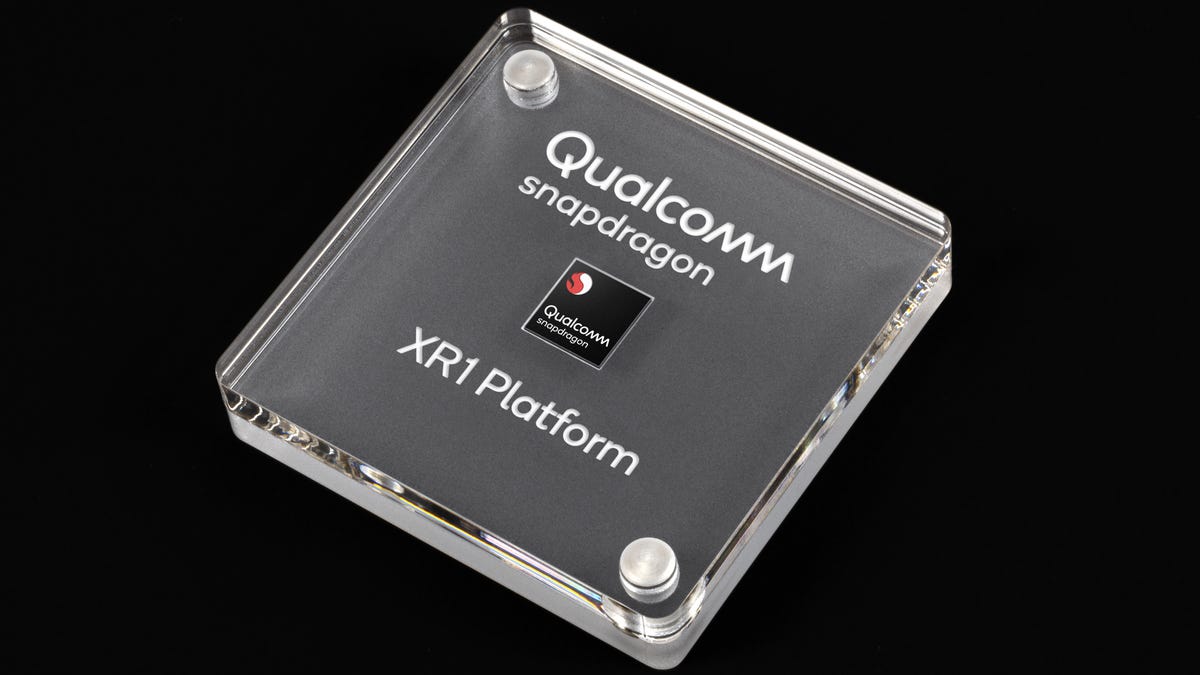Qualcomm's first VR and AR chip, XR1, will give us a lot more things like Oculus Go
Vive, Vuzix, Meta and Pico are partners, with hardware possibly arriving in 2019.

Will the Snapdragon XR1 be the savior of smartglasses?
Standalone VR headsets like Oculus Go have shown up to middling reviews, and smart glasses are still a mess. If AR and VR headsets don't get smoother and cheaper, they may never catch on. Qualcomm's trying to help with a new chip, the Snapdragon XR1, intended to get more affordable AR and VR wearables off the ground and possibly AI-assisted wearables, too.
XR stands for "Extended Reality," Qualcomm's terminology for AR, VR and everything in between. But don't expect magical holographic headsets like Magic Leap. XR1 is aimed at making existing smartglasses work better, and be cheaper. Qualcomm is specifically aiming XR1 at helping AR and VR get more convenient, comfortable and affordable.
Qualcomm already has four hardware partners working on XR1-run devices: HTC Vive , Vuzix, Meta and Pico, but no one has announced an XR1-ready device yet.
Get ready for more of this.
More Oculus Go-like VR headsets
Qualcomm already makes chips that are in standalone VR headsets. In fact, Qualcomm's hardware is in all the major VR hardware: the Oculus Go, Lenovo Mirage Solo, Samsung Gear VR and HTC Vive Focus . According to representatives from Qualcomm, the Snapdragon XR1 supports VR with either "6-degree-of-freedom" full room tracking like what Google and Lenovo's standalone Mirage Solo VR headset can do, or more basic VR like the Oculus Go that stays in one place. Expect VR controllers to be similar to the remote-control wands like Oculus Go, Gear VR, Google Daydream and Mirage Solo currently use.
What's unclear is whether XR1 is going to cut a new bleeding edge for mobile VR graphics. In fact, according to Qualcomm, the existing Snapdragon 845 (and even the 835) are more "premium" processors when it comes to making graphics look sharp and vivid (the Snapdragon 835 is in the Lenovo Mirage Solo standalone VR headset and the HTC Vive Focus, which is heading to the US later this year). The XR1's advantages could lie in reducing latency and making everything work more smoothly, which is a lot of what makes VR good in the first place.
HTC could be using the new chip to help more headsets work with the company's mobile Vive Wave VR software. Rikard Steiber, president of HTC Vive's Viveport, said in a prepared statement, "With Qualcomm's new XR1 chipset -- we believe the AIO [all-in-one] market and the Wave platform will both be poised to grow."
The Vuzix Blade, announced earlier this year, could see a performance improvement with XR1.
A new wave of smartglasses
But maybe VR isn't why the XR1 chipset matters. We're hoping it ushers in a new area of actually-good AR headsets and smart glasses.
Vuzix's Lance Anderson, VP of enterprise sales, confirmed to CNET that the company's working on two new devices using the XR1: something based on the recently-announced Blade smart glasses, and an enterprise wearable. Anderson wouldn't specify how far into the development cycle Vuzix is for its next hardware, but that anything with XR1 is "not 2018." (So… 2019?)
While the XR1 isn't for "3D mapping the world and magic dragons" with holograms, Anderson expects it to allow smart glasses to better recognize images with built-in cameras, help navigate, connect to voice AI, and basically do all the things smart glasses promised when Google Glass launched. "No one's walking down the street in an M300, and we recognize that," referring to Vuzix's current enterprise smart-glass wearable.
Voice AI is one of the tasks XR1 promises to do really well, as well as onboard computer vision via cameras. For those skills alone, this chip could end up bringing more voice-connected eyewear in the next few years -- glasses that could help take pictures and search for directions hands-free more easily.
Considering that the average pair of smart glasses looks absurd (like ODG's hardware), and Intel 's sort-of-like-regular-glasses Vaunt project has been cancelled, the XR1 could be the last best shot for face-based wearables.

